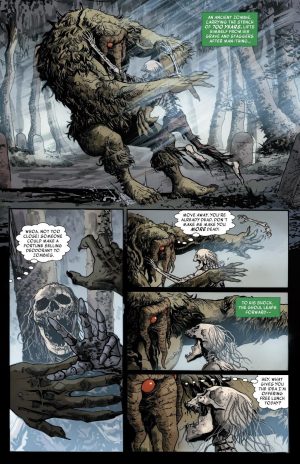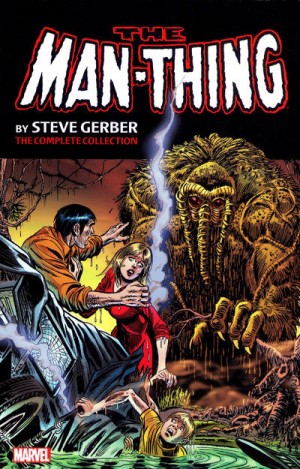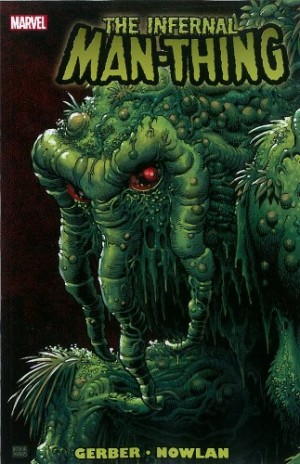Review by Frank Plowright
Those Who Know Fear combines a feature presentation starring Marvel’s swamp monster with five back-up strips in which author R.L. Stine channels the twist in the tail horror stories he read as a child. In principle, then, an appealing package.
This is a very different version of Man-Thing from the traditional mindless shambling muck monster, drawn via instinct toward the fearful and burning them via acidic touch. This Man-Thing is also Ted Sallis, his transformation the result of his chemical experimentation, but he retains his intelligence and capacity to speak, at least at the start, and has parlayed his condition into a film career. However, while that’s of minor interest, his taking a massive sideways shift is more compelling.
Throughout the main story artist Germán Peralta supplies a sense of unease via the shifting locations, each fully defined, and great montage pages harkening back to the 1970s Man-Thing comics. Stine’s plot channels common anxiety dreams of the type we all experience, with variations of inadequacy most frequent, and Peralta brings these to disturbing life.
How a reader reacts to Those Who Know Fear is likely to depend on their familiarity with Man-Thing. The most creative run was Steve Gerber’s 1970s work, and Stine certainly channels that form of weirdness effectively by having Man-Thing stumbling about through bizarrely morphing scenarios unable to communicate. However, the addition of a guiding intelligence brings Man-Thing so much closer to DC’s Swamp Thing, which is a mistake, and while the 1970s work had moments of humour, here it’s intrusive. The increasing use gradually transforms the nightmare into comedy, and Stine lacks Gerber’s facility for the surreal. The eventual result is Those Who Know Fear being an acceptable pastiche, but no more.
In his introduction Stine writes of his love for 1950s EC horror comics, and he channels those far more effectively in the back-up strips. The originals were gruesome and sometimes amusing morality tales, and Stine plays with the idea of revenge being enacted on appalling people and possible innocents learning hard lessons. With some great artists attached, this is a case of the back-up material elevating the entire project.





